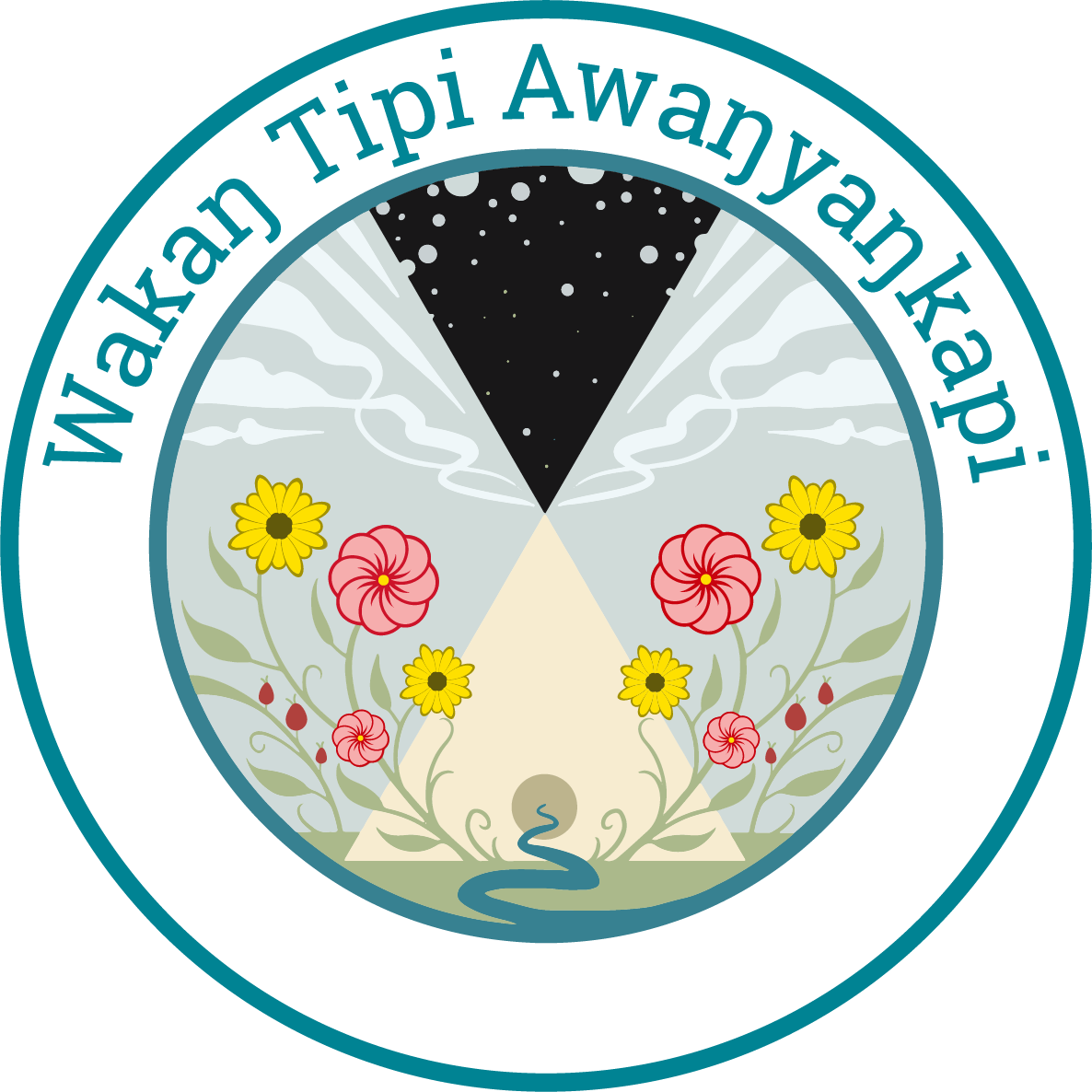Between October 7th and October 8th, 2020, the governor of Minnesota weaponized half of the state’s 149 conservation officers against citizens of Minnesota. The 75 officers are employed by the state’s Department of Natural Resources (DNR), and their listed primary purpose is to “enforce laws related to fish and wildlife, state parks, trails, forests, waters and wetlands.” It is also listed as a key qualification for the position that conservation officers must “not pose a direct threat to the health or safety of other individuals in the performance of job duties and responsibilities.” The enlisting of these “peace” officers to patrol and criminalize peaceful community gatherings is yet another reminder of the violence enacted by American empire on the lands and people of Turtle Island.
A week later, on Indigenous Peoples’ Day, we hosted a virtual launch of the Wakáŋ Tipi Center (you can find our recap of the event in our October newsletter, or watch the full event on our YouTube page!). We asked Dakota elder Faith Spotted Eagle to share her perspective on the meaning and value of sacred sites, and this is what she told us:
The responsibility comes to us in these sites with perpetual protection because it is our lifeway [...] [This responsibility] is in our DNA. Our spaces were not even legally allowed to be sacred until the American Indian Religious Freedom Act of 1978. Places were stolen from us and re-named without respect by settlers.
The goals of a conquering government are: (1) to erase and replace; (2) to rely on the logic of elimination.
This is not to say that all state officials, or that all non-Dakota allies, share this ill-intentioned perspective. Rather, it is the institutions of white supremacy and colonialism that impose these perspectives on the people and lands of Turtle Island. In fact, Faith went on to say that allies (from both the government and the public) play a critical role in protecting and reclaiming sacred sites. We need look no further than Wakáŋ Tipi itself -- it took years of dedicated investment from private and public organizations to purchase the land, and years more to fund the remediation and restoration work that created Bruce Vento Nature Sanctuary. This does not obscure the harm caused by Andrew Carnegie and the railroad; this does not excuse the desecrations committed by state anthropologists, historians, even tourists. What Faith’s comments and Wakáŋ Tipi’s history tell us is that we must value every opportunity to take back what has been lost. In so doing, we re-discover the energy that connects Dakota people to Dakota land, and we restore strength and power to both.
***
Last week we had a lovely conversation with Asha Shoffner, Environmental and Outdoor Education Coordinator for St. Paul Parks & Rec, about her newly established BIPOC Outdoors - Twin Cities group, dedicated to outdoor enjoyment led by and for Black, Indigenous and/or People of Color. A couple of weeks ago Asha hosted a Full Moon hike where community members gathered at dusk to go on a 1-mile hike along the Mississippi River. She recalls,
I have never felt more embodied while outside in my entire life. We had two wonderful Indigenous women from different nations share their cultural teachings of the full moon. One woman who was kānaka ʻōiwi, or Native Hawaiian, shared with us her teachings while another woman shared with us the importance of laying tobacco down in the water to connect and pray with the full moon.
This brings up a really important distinction. BIPOC folks tend to break down the compartmentalization of the mind, body, and spirit while on the land in a way that is healing and nourishing to the soul. We recognize that our bodies, minds, and spirits are not only connected with each other but also the land and waterways. When we share our cultural and spiritual practices of the Earth and all of Her relatives, we are reconnecting and remembering the parts of our bodies and minds to our spirit and sense of spirituality. We are creating an embodied experience where all elements of ourselves and the land and waters are in alignment.
[Our virtual launch emcees share a laugh with Graci & Faith during their conversation.]
To have spaces like Wakáŋ Tipi at all -- much less to protect them, nurture them, and re-establish sacred relationships with them -- is a victory worth celebrating. And it is true, as Faith reminded us on Monday night, that allies (including the government itself!) play a role in these victories. And yet, it is no accident that Lower Phalen Creek Project has changed over time. It is no accident that a group of largely white conservationists and community members sought to save a neglected parcel of land. It is no accident that Dakota community members were drawn to this site and the work involved in protecting it. It is no accident that we became Native-led, in our staff and board. As Maggie writes in this month’s letter from the executive director, there is no single, absolute path to land sovereignty. But to walk that path, to acknowledge that even the term “sacred site” does not fully reflect the value of a place like Wakáŋ Tipi to Dakota people -- to do these things is to begin to break out of the restraints imposed by the American empire. This is why we celebrate BIPOC-led outdoors activities. This is why we work to make green spaces accessible to our community. When the people and the land have each suffered too much to name, it is only right that they should heal and come to thrive again, together.

![[Our virtual launch emcees share a laugh with Graci & Faith during their conversation.]](https://images.squarespace-cdn.com/content/v1/64246a1951853227e9ab9a0a/1680108104901-W2NCOPHVGMS8GSFTTUHQ/Powerhouses%21.png)
